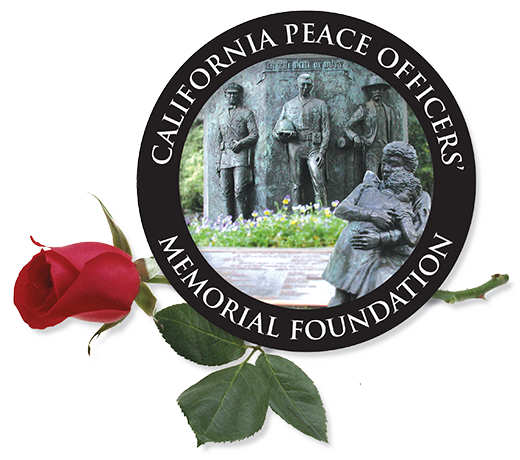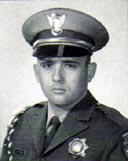Officers Walter C. Frago and Roger D. Gore had been alerted by radio of a vehicle carrying someone who had brandished a weapon. They spotted the car, fell in behind, called for backup, and began the enforcement stop procedure. When the subject’s vehicle had come to a halt in a parking lot, the driver was instructed to get out and place his spread hands on the hood. Gore approached him and Frago moved to the passenger side. The right-side door suddenly swung open and the passenger sprung out, firing at Frago, who fell with two shots in his chest The gunman, later identified as Jack Twinning, then turned and fired once at Gore, who returned fire. In that moment the driver, Bobby Davis, turned and shot Gore twice at close range. Both officers died instantly: both were 23 years old.
When Officers James E. Pence, Jr. and George M. Alleyn drove in moments later, they could see neither suspects nor downed officers but immediately came under fire. Pence put out an 11-99 call (“officer needs help”) then took cover behind the passenger door. Alleyn grabbed the shotgun and positioned himself behind the driver-side door. Both officers were mortally wounded in the ensuing exchange and died. Each was 24 years old.
One suspect was hit, but both escaped. They later abandoned their vehicle and split up. Officers blanketed the area for nine hours. Twinning broke into a house and briefly held a man hostage. Officers used tear gas before storming the house, but the suspect killed himself using the shotgun he had stolen from Officer Frago. Davis was captured, stood trial and convicted on four counts of murder. He is now serving a life sentence in a California maximum security prison.
The words Newhall and tragedy became forever synonymous on April 6, 1970. On that day four young California Highway Patrol Officers-all had been on the job less than two years-lost their lives in a four minute gun battle. Sympathy, concern and interest were expressed from President Richard Nixon in the White House to Governor Ronald Reagan at the State Capitol. Calls and telegrams were received from federal, state and city police agencies throughout the United States.
In the weeks immediately after the four deaths, the emotionally charged follow-up investigation sometimes lingered on fault-finding, but ultimately achieved the desired catharsis – a completely revamped set of procedures to be followed during high-risk and felony stops, with emphasis at every Step on officer safety. If there can be such a thing as a silver lining in a cloud this dark, it would be renewed focus on officer safety – not just with the CHP but with allied police agencies the world over.
Firearms procedures have changed fundamentally; physical methods of arrest have been perfected; the police baton has become a more integral element of enforcement tactics; and new protective tools have become part of the officer’s standard equipment. Along with these have become far more comprehensive training – all combining to make uniformed personnel more alert and better prepared for the inevitable danger faced by CHP officers.

